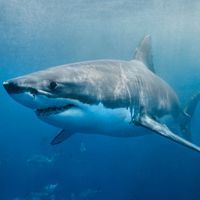Login
Subscribegenetics, evolution

Gene Variant Points to Starvation’s Evolutionary Legacy
Sophie Fessl, PhD | Sep 28, 2021 | 4 min read
Ancient and modern genomes reveal that a variant of the human growth hormone receptor likely helped our ancestors survive when food was scarce.

Alu Leap May Explain Why Apes Don’t Have Tails
Annie Melchor | Sep 23, 2021 | 2 min read
A transposable element that jumped into the TBXT gene, which is linked to tail morphology, appears to be to blame for our missing appendage.

7,200-Year-Old Skeleton Offers Clues to Early Human Migration
Catherine Offord | Aug 29, 2021 | 2 min read
Analysis of DNA from remains found in an Indonesian cave provides new insight into human movements among the islands between East Asia and Australia.

Indigenous Filipino Group Has Highest Known Denisovan Ancestry
Annie Melchor | Aug 13, 2021 | 3 min read
Researchers found the relatively high proportion of DNA from a hominin cousin—nearly 5 percent—when they scanned more than 1,000 genomes from 118 distinct ethnic groups.

The Extinct Species Within
Christie Wilcox, PhD | Aug 6, 2021 | 10+ min read
The genomes of living animals are littered with DNA from long-gone relatives, providing a lens on evolution, past extinctions, and perhaps even solutions to agricultural problems.

Gene Offers Clue to How Human Labor Starts
Christie Wilcox, PhD | Aug 1, 2021 | 2 min read
Genes associated with preterm birth and protecting the fetus from the mother’s immune system appear to be regulated by HAND2.

Genes Shared With Viruses Protect Caterpillars from Parasitic Wasps
Annie Melchor | Jul 30, 2021 | 4 min read
A newly identified gene family named “parasitoid killing factor” is found in both insect-infecting viruses and their hosts, although researchers can’t yet tell where they originated.

My Daughter’s First Pet—the Next Big Model Organism?
Christie Wilcox, PhD | Jul 15, 2021 | 10+ min read
Bettas were likely the first fish welcomed into human homes. Now, scientists are welcoming them into the lab to learn how genes dictate their appearance and behavior.

“Dragon Man” May Replace Neanderthal as Our Closest Relative
Amanda Heidt | Jun 25, 2021 | 8 min read
A massive, well-preserved skull discovered in China in the 1930s belongs to a new species called Homo longi, researchers report, but experts remain skeptical about the evidence.

A Multipurpose Gene Facilitates the Evolution of an Animal Weapon
Viviane Callier | May 11, 2021 | 4 min read
A single gene called BMP11 regulates not only the size and proportions of a water strider’s massively long third legs, but also how it uses the limbs in fights.

Whole-Genome Data Point to Four Species of Giraffe
Ruth Williams | May 6, 2021 | 4 min read
The genome sequences of 51 giraffes from all over Africa contribute to the latest attempt in an ongoing pursuit to pin down a species number.

Picozoans Are Algae After All: Study
Christie Wilcox, PhD | May 6, 2021 | 5 min read
Phylogenomics data place the enigmatic plankton in the middle of the algal family tree, despite their apparent lack of plastids—an organelle characteristic of all other algae.

“Rogue” Protein Could Contribute to Humans’ High Cancer Rates
Asher Jones | Apr 1, 2021 | 2 min read
A mutant protein called Siglec-XII may promote carcinoma progression in humans, but inactivation of its gene seems to avoid the problem, according to a study.

Genes from Bacteria Likely Aided Plants’ Move to Land
Shawna Williams | Nov 15, 2019 | 2 min read
An analysis suggests that DNA cribbed from soil microbes enabled plants’ ancestors to colonize a terrestrial environment.

Martha Muñoz Uncovers the Drivers and Dampers of Biodiversity
Nicoletta Lanese | Nov 1, 2019 | 3 min read
The Yale biologist says that organisms’ behavior, physiology, and morphology engage in a constant “evolutionary dance.”

Neanderthal DNA in Modern Human Genomes Is Not Silent
Jef Akst | Sep 1, 2019 | 10+ min read
From skin color to immunity, human biology is linked to our archaic ancestry.

Infographic: History of Ancient Hominin Interbreeding
Jef Akst | Sep 1, 2019 | 3 min read
See when and where our ancestors may have interbred with Neanderthals and Denisovans.

Brain Surface Area Reveals Overlap in Genes, Intelligence, Evolution
Carolyn Wilke | Mar 4, 2019 | 5 min read
An analysis of the contours of more than 600 kids’ brains points to links between cerebral surface area and heritability in regions of the brain important in cognition.

Longevity Clues Tucked in Great White Shark Genome
Ashley Yeager | Feb 19, 2019 | 2 min read
Certain adaptations identified in the fish’s DNA linked to wound healing, cancer protection, and a long life.

Language Gene Dethroned
Shawna Williams | Aug 3, 2018 | 2 min read
Contrary to earlier results, FOXP2 did not undergo a “selective sweep” as humans developed language, a study finds.